⚖️ Comparative Legal Frameworks: Essential Concepts for Reading Comprehension
Comparative legal frameworks analyze the diverse systems, laws, and principles governing societies worldwide. This field highlights how cultural, historical, and political factors shape legal systems and their application. RC passages on this topic often explore contrasts between laws, their global implications, and emerging challenges in legal harmonization. By mastering these concepts, readers can critically evaluate the nuances of law across different jurisdictions.
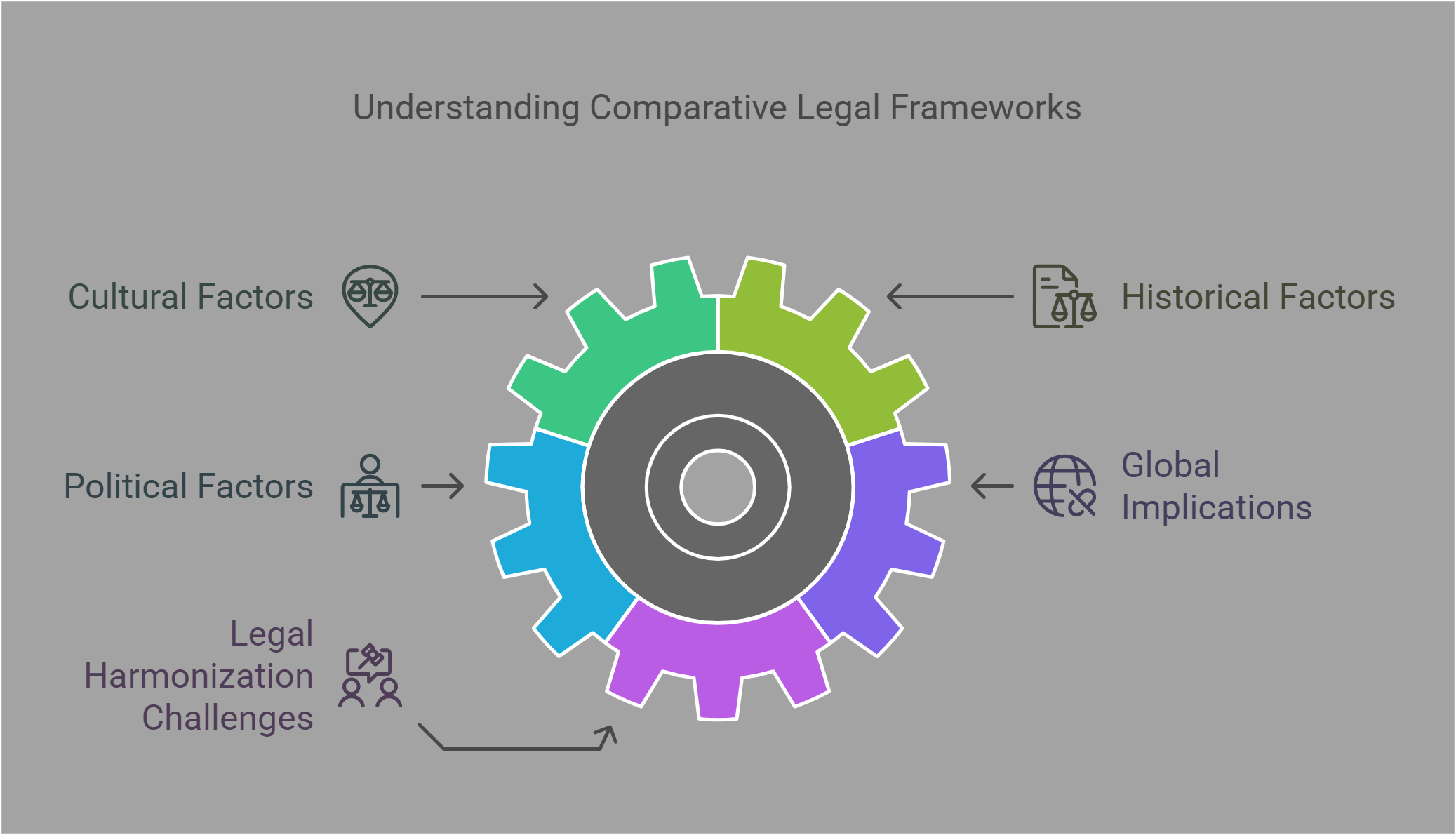
📋 Key Concepts
This guide explores the following essential concepts in comparative legal frameworks:
- Sharia Law vs. Secular Law
- Indigenous Legal Systems
- Restorative Justice Models
- Transitional Justice Mechanisms
- Common Law Precedent vs. Codified Law
- International Maritime Law
- Humanitarian Law in Armed Conflicts
- Intellectual Property Treaties
- Antitrust Regulations Across Nations
- Digital Jurisdiction in Cross-Border Disputes
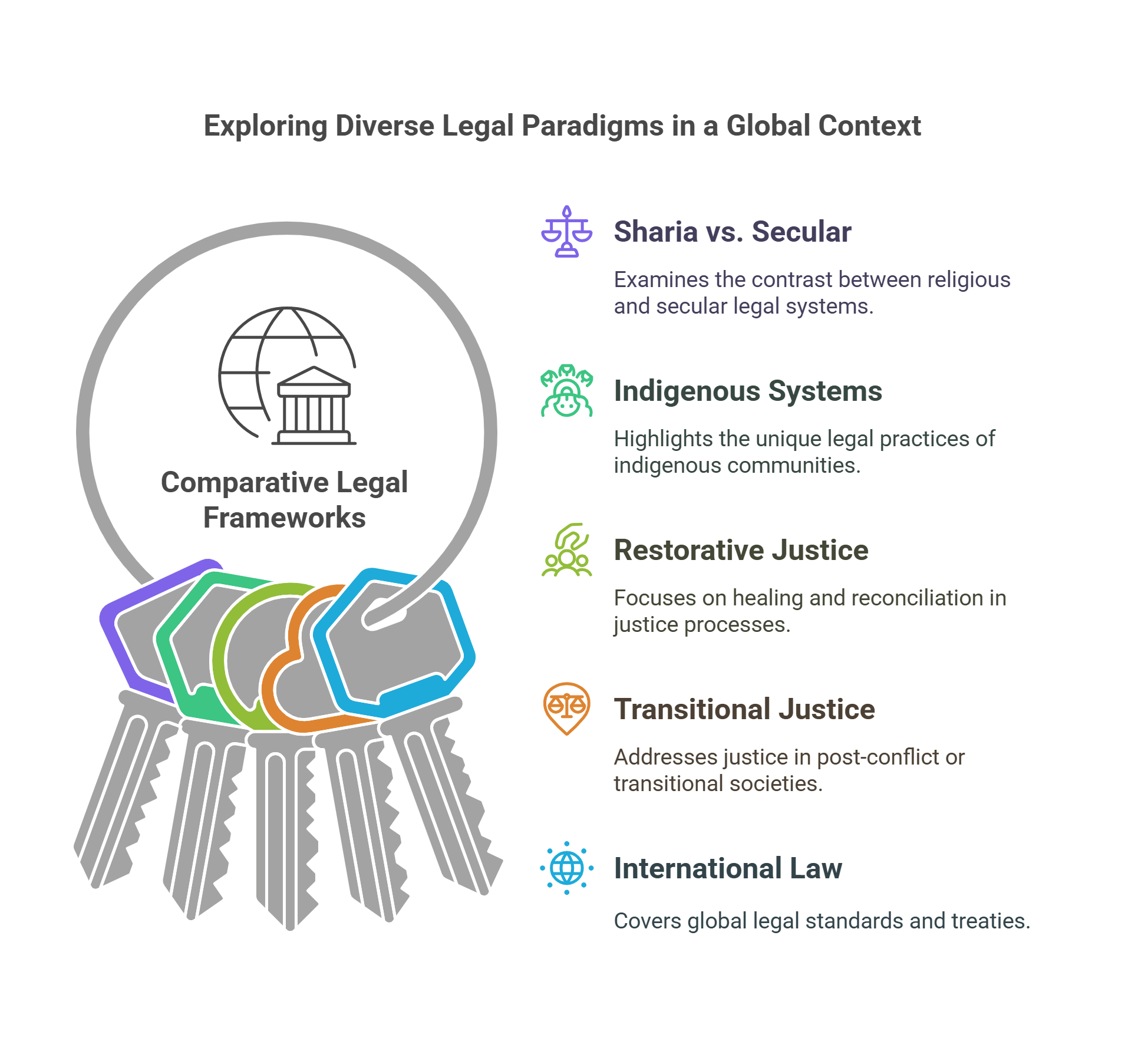
🔍 Detailed Explanations
1. Sharia Law vs. Secular Law
Detailed Explanation: Sharia law is an Islamic legal framework derived from the Quran, Hadith, and scholarly interpretations, emphasizing religious and moral guidance. Secular law, on the other hand, separates religion from governance, relying on constitutional and statutory provisions to ensure impartiality in legal matters.
- Key Differences:
- Basis: Sharia is faith-based, while secular law relies on rationality and universal principles.
- Application: Sharia governs personal, civil, and criminal matters in some Islamic countries; secular law dominates in nations with diverse or non-religious populations.
- Example: In Saudi Arabia, Sharia heavily influences legal decisions, while France’s secular model restricts religious influence in governance.
Explained Simply: Sharia law guides with faith, while secular law governs with neutrality.
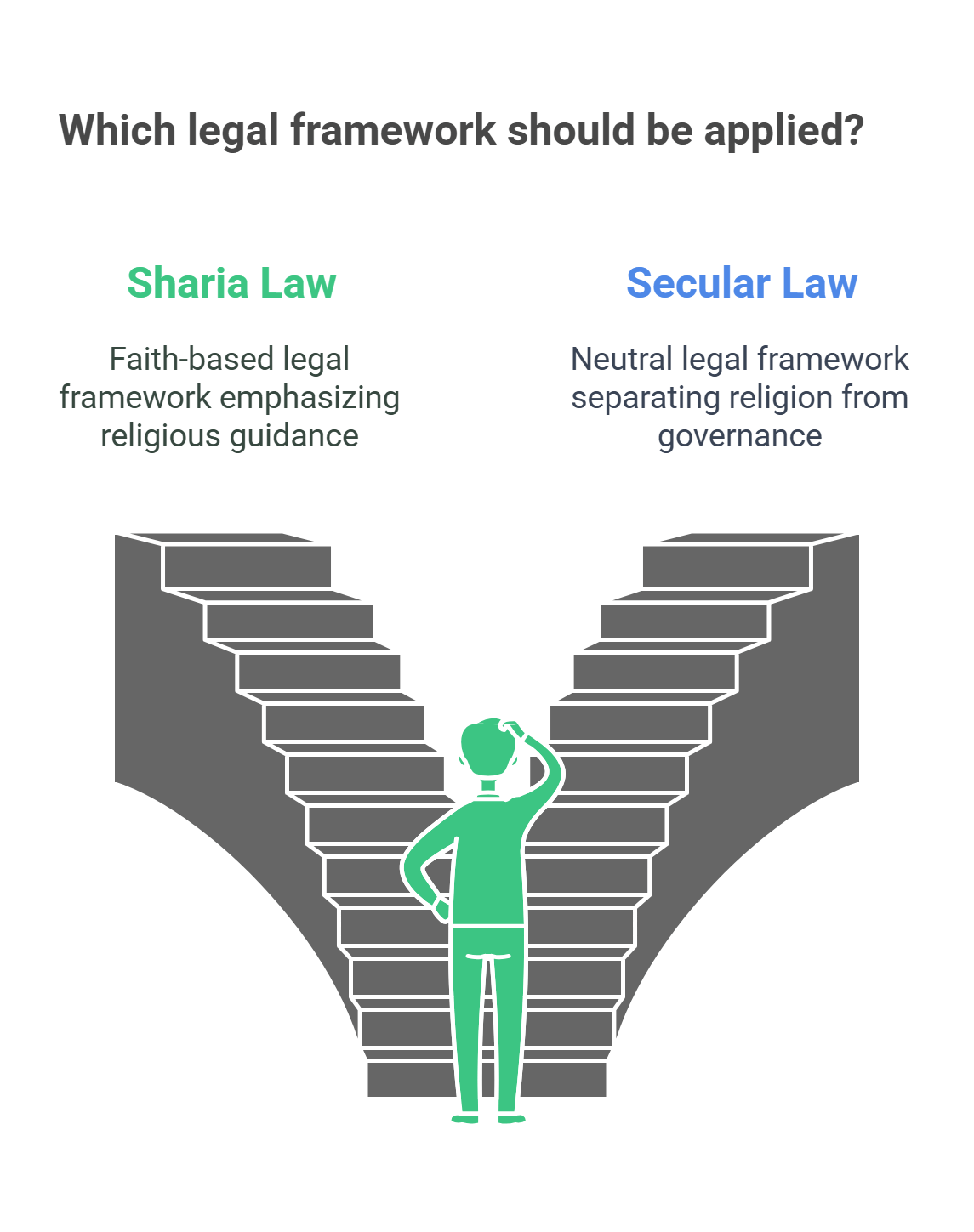
2. Indigenous Legal Systems
Detailed Explanation: Indigenous legal systems are community-based frameworks rooted in the traditions, customs, and values of Indigenous peoples. They prioritize harmony, restoration, and collective well-being.
- Key Features:
- Customary practices often passed orally through generations.
- Emphasis on communal responsibility over individual punishment.
- Applications:
- Used in conflict resolution and land disputes within Indigenous communities.
- Recognized in some national frameworks, such as Canada’s acknowledgment of Indigenous self-governance.
- Example: The Māori system in New Zealand integrates customary practices within the country’s broader legal framework.
Explained Simply: Indigenous legal systems are like cultural blueprints for justice, emphasizing tradition and community values.
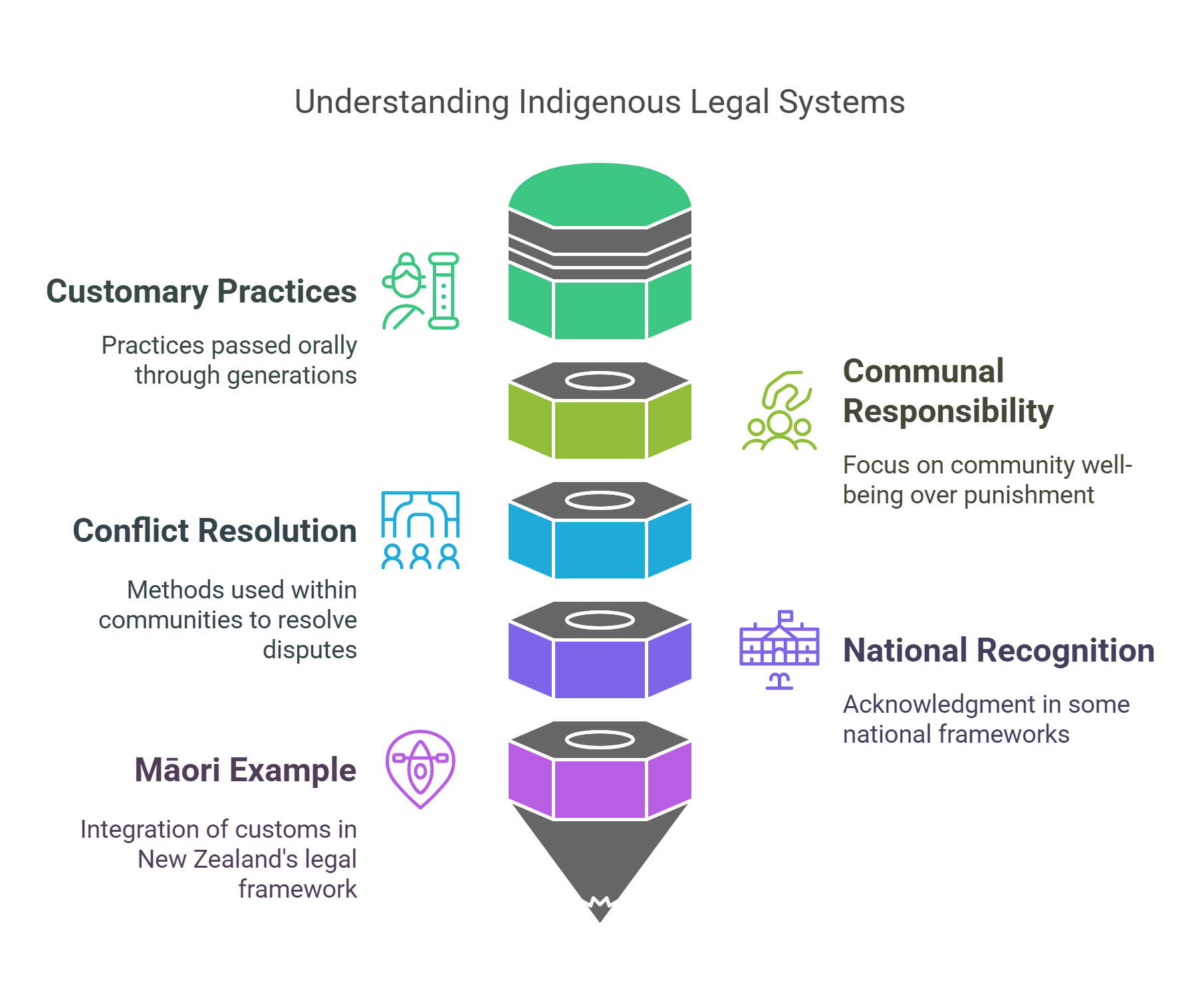
3. Restorative Justice Models
Detailed Explanation: Restorative justice focuses on repairing harm by involving victims, offenders, and the community in dialogue and resolution, rather than solely punishing offenders.
- Core Principles:
- Accountability: Offenders take responsibility for their actions.
- Repair: Emphasis on restitution and healing.
- Inclusion: Active participation of all stakeholders in the justice process.
- Applications: Used in schools, workplaces, and criminal justice systems to address conflicts constructively.
- Example: Restorative justice circles in the U.S. allow victims and offenders to discuss the impact of crimes and agree on reparations.
Explained Simply: Restorative justice is like mending a broken relationship—focusing on healing rather than punishment.
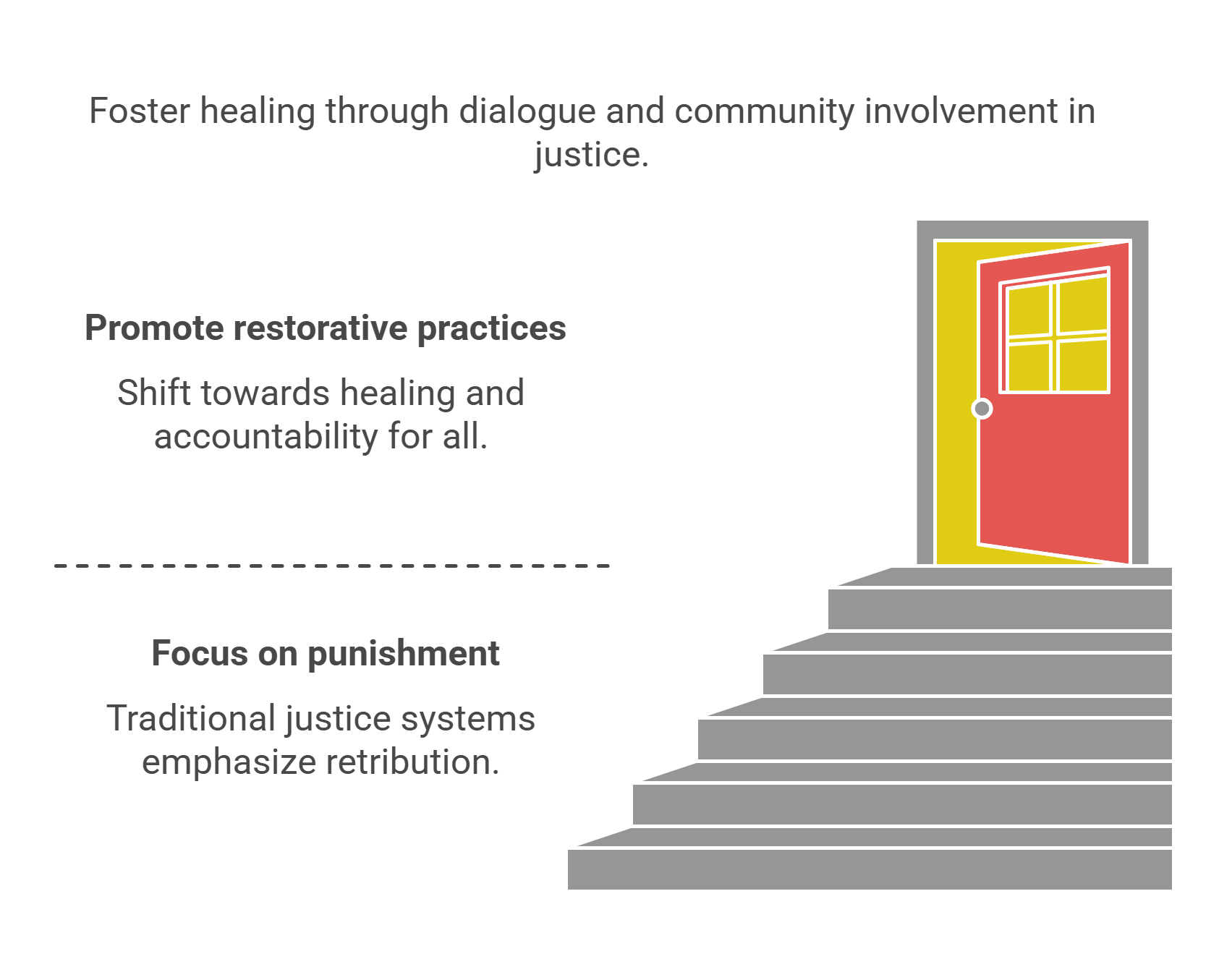
4. Transitional Justice Mechanisms
Detailed Explanation: Transitional justice addresses past human rights violations during periods of political transition, such as post-conflict or post-authoritarian rule. It aims to achieve accountability, reconciliation, and lasting peace.
- Key Mechanisms:
- Truth Commissions: Document past abuses (e.g., South Africa’s Truth and Reconciliation Commission).
- Criminal Trials: Prosecute perpetrators of serious crimes.
- Reparations: Compensate victims for losses and suffering.
- Institutional Reforms: Ensure non-repetition of abuses.
- Example: The International Criminal Tribunal for Rwanda prosecuted key figures responsible for the Rwandan Genocide.
Explained Simply: Transitional justice is like clearing the air after a storm—acknowledging past harm to rebuild trust.
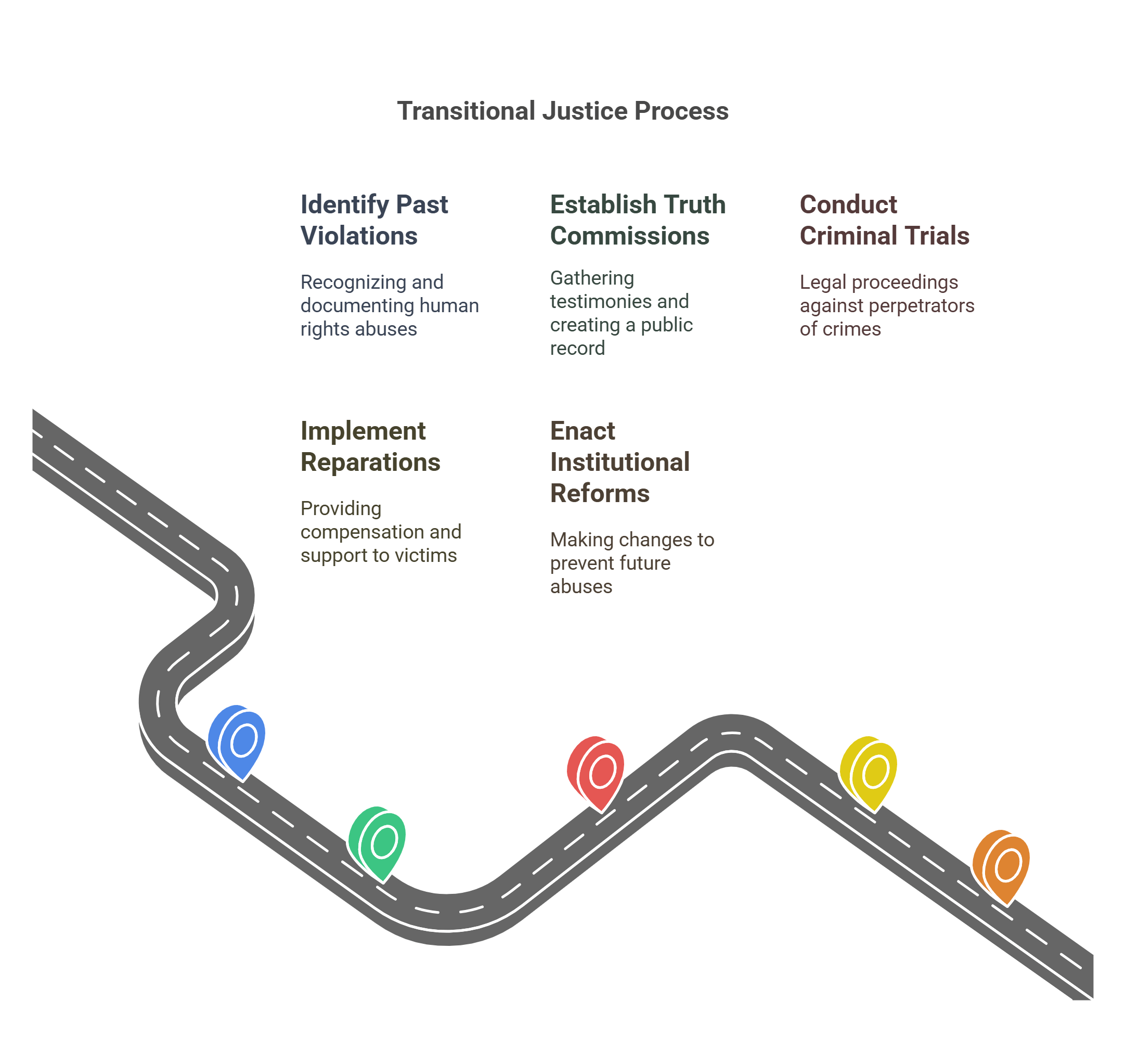
5. Common Law Precedent vs. Codified Law
Detailed Explanation: Common law and codified law represent two distinct legal traditions:
- Common Law:
- Relies on judicial decisions (precedents) to interpret and apply the law.
- Evolves through case rulings, offering flexibility.
- Practiced in countries like the U.S., U.K., and Canada.
- Codified Law:
- Based on comprehensive legal codes written by legislatures.
- Emphasizes uniformity and clarity over judicial discretion.
- Found in countries like France, Germany, and Japan.
- Key Difference: Common law adapts through courts, while codified law depends on legislative updates.
- Example: In the U.S., landmark cases like Brown v. Board of Education shape common law, while France’s Napoleonic Code governs civil matters.
Explained Simply: Common law is like a growing tree, while codified law is a fixed blueprint.
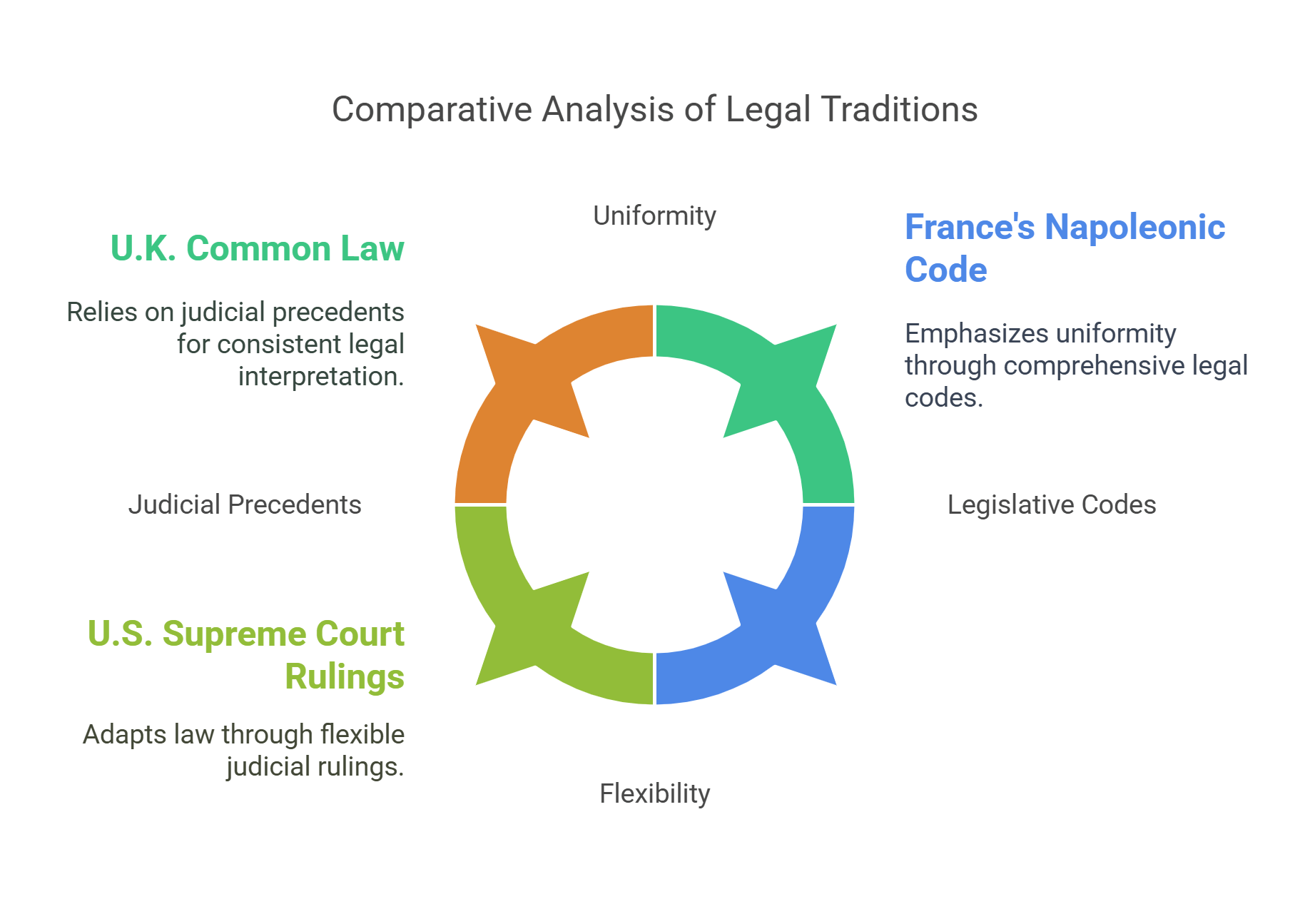
6. International Maritime Law
Detailed Explanation: International maritime law, or the law of the sea, governs the use of oceans and their resources, ensuring freedom of navigation, environmental protection, and equitable resource distribution.
- Key Framework:
- United Nations Convention on the Law of the Sea (UNCLOS): Defines territorial waters, exclusive economic zones (EEZs), and high seas regulations.
- Applications:
- Resolves disputes over fishing rights, oil exploration, and territorial claims.
- Addresses issues like piracy and marine pollution.
- Example: The South China Sea dispute involves overlapping claims to maritime zones and resources.
Explained Simply: Maritime law is like rules for sharing a vast, interconnected ocean playground.
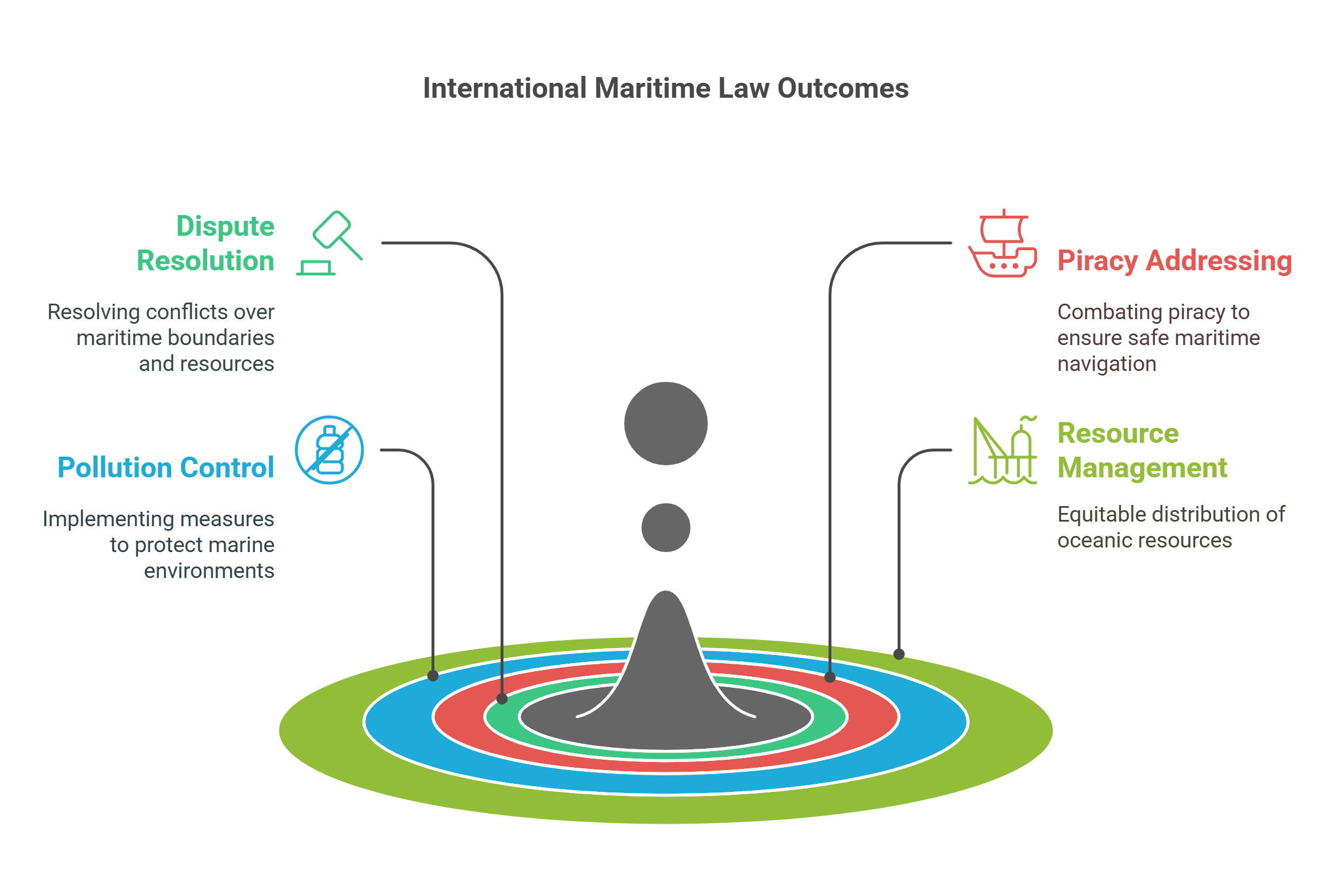
7. Humanitarian Law in Armed Conflicts
Detailed Explanation: Humanitarian law, also known as the law of armed conflict or international humanitarian law (IHL), regulates the conduct of war to protect those not participating in hostilities. It aims to balance military necessity with humanity, safeguarding civilians, prisoners of war, and the wounded.
- Key Frameworks:
- Geneva Conventions (1949): Core treaties outlining the protection of non-combatants and humanitarian treatment during conflicts.
- Hague Conventions: Focus on permissible methods and means of warfare.
- Key Principles:
- Distinction: Differentiating between combatants and non-combatants.
- Proportionality: Ensuring that military actions do not cause excessive harm to civilians relative to the military advantage gained.
- Necessity: Limiting violence to what is necessary for achieving legitimate military objectives.
- Example: Humanitarian law prohibits targeting schools or hospitals during armed conflicts.
Explained Simply: Humanitarian law is like the rules of fair play during a fight, ensuring minimal harm to bystanders.
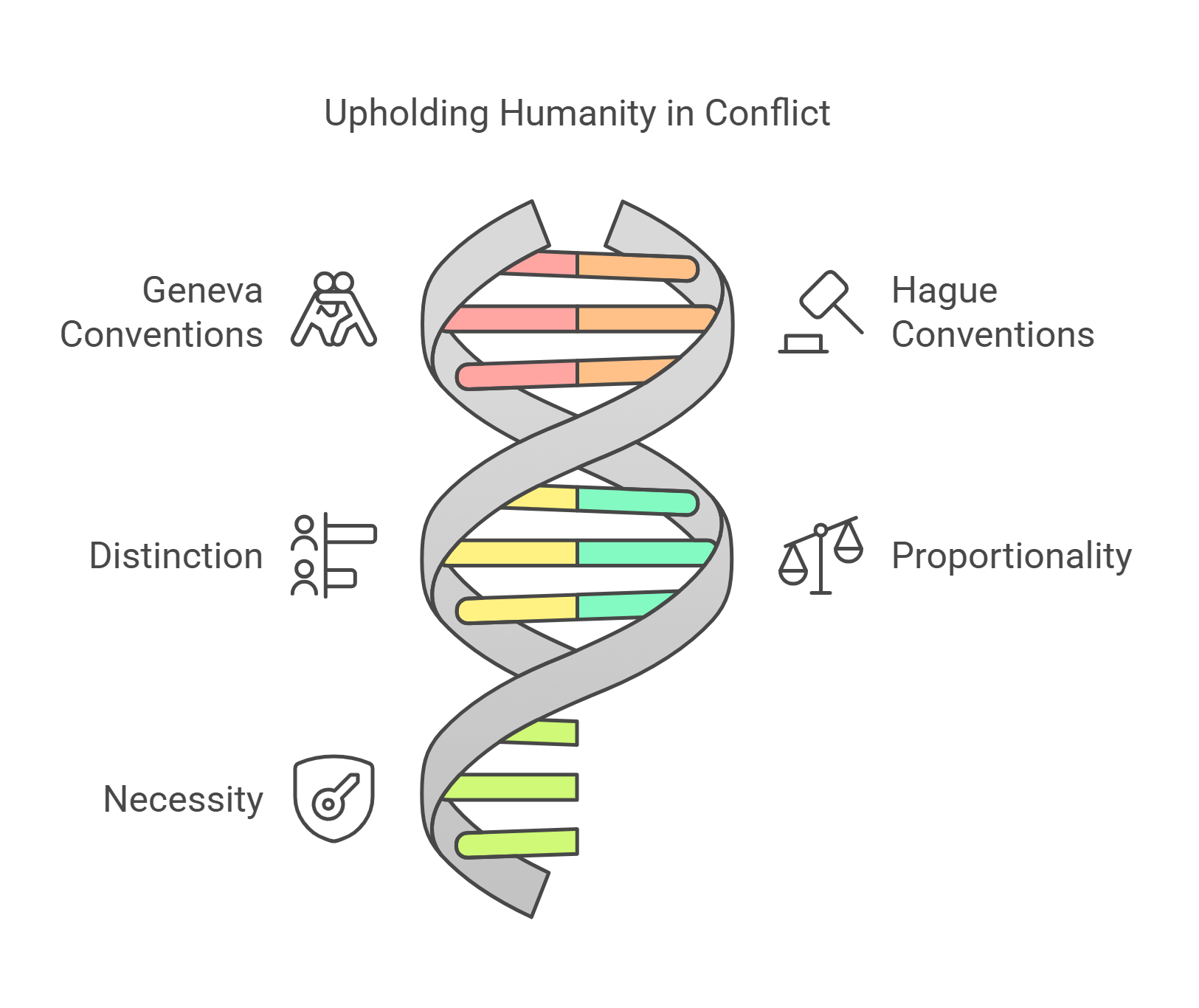
8. Intellectual Property Treaties
Detailed Explanation: Intellectual property (IP) treaties establish global standards for protecting creations of the mind, such as inventions, literary works, and trademarks, ensuring creators’ rights are recognized across borders.
- Key Agreements:
- Paris Convention (1883): Protects industrial property like patents and trademarks across member states.
- Berne Convention (1886): Ensures copyright protection for literary and artistic works internationally.
- TRIPS Agreement (1995): Sets minimum standards for IP protection and enforcement under the World Trade Organization (WTO).
- Applications:
- Facilitates innovation by protecting creators’ economic and moral rights.
- Harmonizes IP laws to promote global trade and cultural exchange.
- Example: A patented pharmaceutical drug developed in the U.S. is protected in other countries under the TRIPS Agreement.
Explained Simply: Intellectual property treaties are like a global lock and key, ensuring creators’ ideas are safe wherever they go.
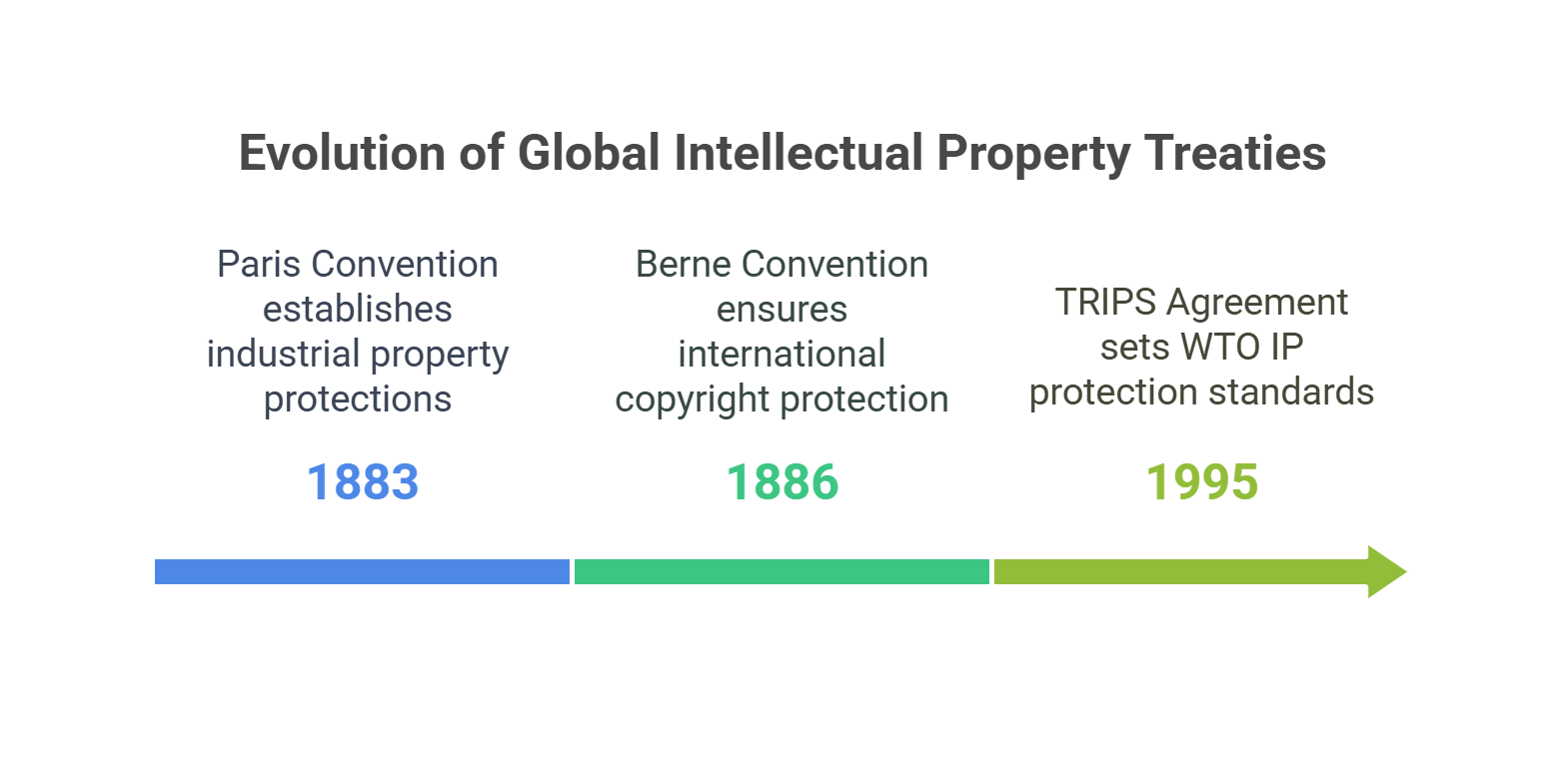
9. Antitrust Regulations Across Nations
Detailed Explanation: Antitrust regulations, also known as competition laws, aim to prevent monopolies, promote fair competition, and protect consumers from exploitative practices.
- Key Elements:
- Preventing Monopolies: Restricting dominant firms from abusing market power.
- Regulating Mergers: Blocking acquisitions that reduce competition.
- Prohibiting Cartels: Preventing agreements between firms to fix prices or limit production.
- Examples of Antitrust Laws:
- Sherman Antitrust Act (U.S.): Prohibits monopolistic practices and anti-competitive agreements.
- EU Competition Law: Oversees mergers, market dominance, and state aid in the European Union.
- Global Challenges:
- Differing national laws complicate cross-border enforcement.
- Digital giants like Google and Amazon face scrutiny for alleged anti-competitive practices.
Explained Simply: Antitrust laws are like referees in a game, ensuring fair play among businesses.

10. Digital Jurisdiction in Cross-Border Disputes
Detailed Explanation: Digital jurisdiction refers to determining which country’s laws apply to online activities that span multiple jurisdictions. This concept is critical in addressing disputes over data privacy, e-commerce, and cybercrimes.
- Key Issues:
- Data Privacy: Conflicts arise when data protection laws, such as the EU’s GDPR, clash with less stringent regulations elsewhere.
- E-Commerce: Determining which laws govern transactions between buyers and sellers in different countries.
- Cybercrime: Addressing hacking or fraud that targets victims across borders.
- Emerging Frameworks:
- Budapest Convention (2001): The first international treaty addressing cybercrime.
- Global Data Protection Rules: Efforts to harmonize privacy standards globally.
- Example: When a European citizen sues a U.S.-based tech company for a GDPR violation, digital jurisdiction determines the applicable legal framework.
Explained Simply: Digital jurisdiction is like deciding which country’s rules apply in a borderless online world.
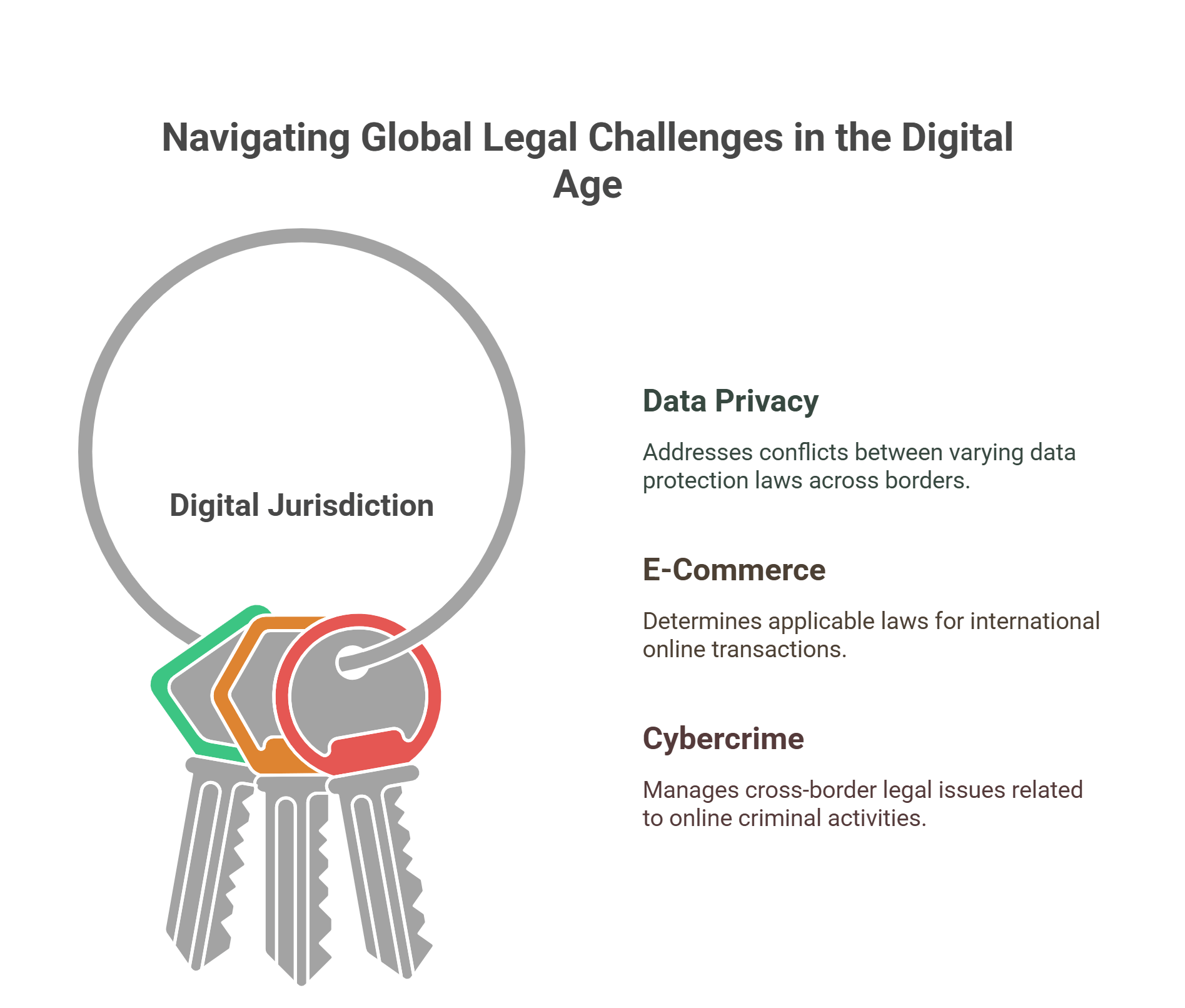
✨ Conclusion
The comparative study of legal frameworks reveals how diverse systems address universal challenges, from humanitarian protections in conflicts to regulating global commerce in the digital age. By understanding concepts like humanitarian law, IP treaties, and digital jurisdiction, readers can critically analyze RC passages and gain insights into the evolving nature of global legal systems.










